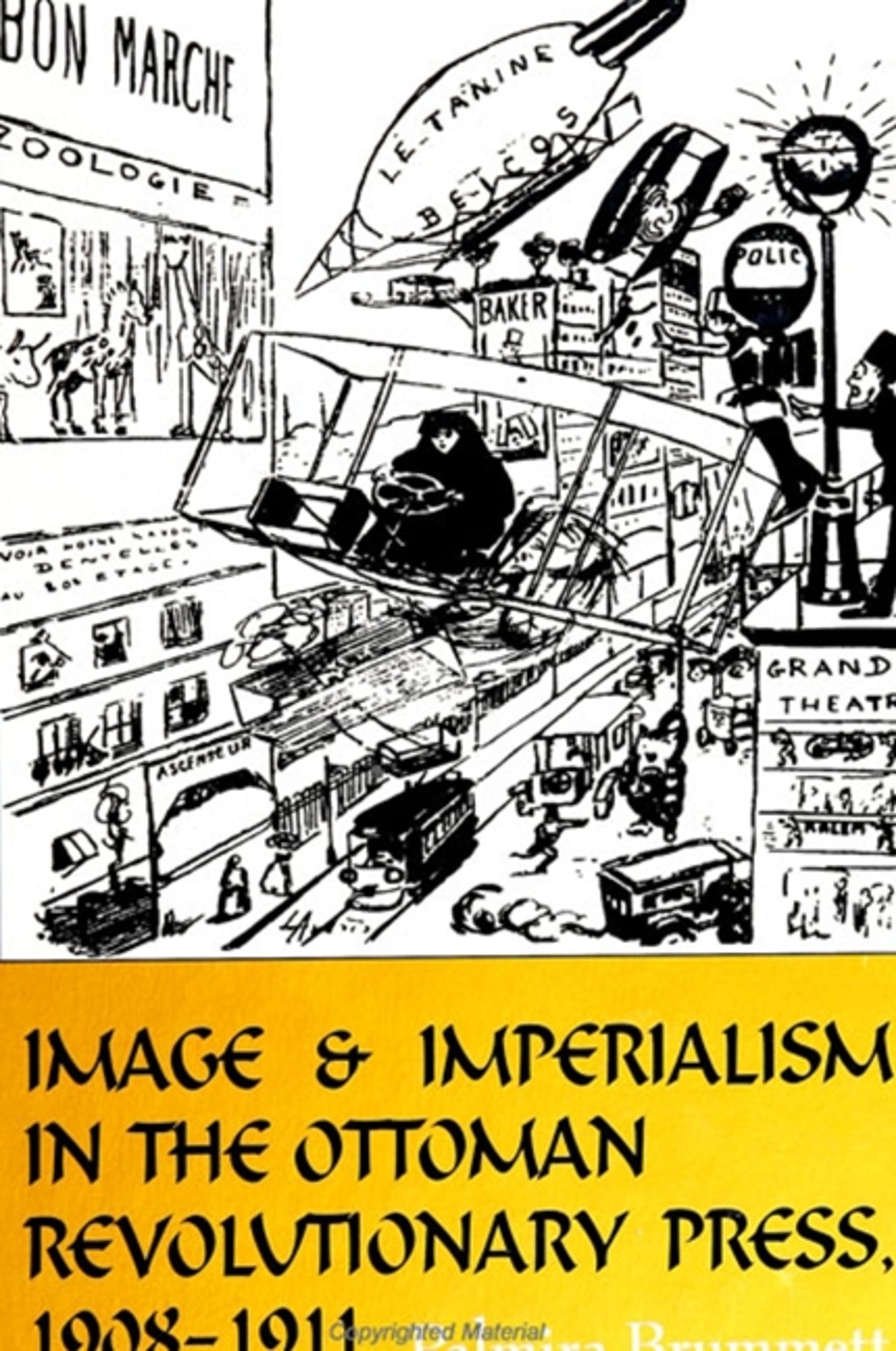We're sorry. An error has occurred
Please cancel or retry.
Image and Imperialism in the Ottoman Revolutionary Press, 1908-1911

Some error occured while loading the Quick View. Please close the Quick View and try reloading the page.
Couldn't load pickup availability
- Format:
-
02 March 2000

An illustrated work focusing on the ways in which satirical publications revealed evolution in Ottoman society.
Palmira Brummett provides a new vision, through the prism of 100 cartoons, of the confrontation between tradition and modernity, "Orient" and "Occident," and rhetoric and reality. Taking a unique period in modern Middle Eastern history, the Ottoman Constitutional Revolution of 1908, Brummett examines the Istanbul satirical press and artfully weaves the narrative and images of political, economic, and cultural transformation to create a new vision of the Middle East at the end of the empire.
This pioneering work of cultural history is drawn against the backgrounds of Ottoman-European relations and press history. It shows how Ottoman cartoonists merged the literary and artistic cultures of East and West through comparisons to the press production and art of Europe, India, Latin America, and the Middle East. In doing so, it intersects with the broader set of studies in European history, the implications of modernity, and the rhetorical uses of images.


"…a very interesting, stimulating, and thought-provoking study." — Digest of Middle East Studies
"This is a truly innovative book. Its importance lies in several dimensions. It does not merely interpret political cartoons—it has much to say about the material condition in which the presses functioned in that period. It provides a history of the Istanbul press and demonstrates that late Ottoman intellectuals had a wide range of thoughts and emotions concerning the Ottoman state and its place in the context of other European powers. It breaks new ground. In connecting the Ottoman situation to that of other formally colonized places, Brummett provides an expanded context for treating the specific circumstances of the place and time. The author's command of the subtleties for the Turkish language and the cultural symbolisms of women is also most impressive." — Gregory C. Kozlowski, author of The Concise History of Islam and the Origin of Empires
List of Illustrations
Acknowledgments
Dating
On Translating Cartoons
A Note on Transliteration
I
Introduction
a. Historical Background
b. Method
II
Publishing, Format, Images, and Readers
III
The Voice and Image of the Public, and Its Targets
IV
Revolutionary Exemplars: France and Iran
V
The Comic Sovereign: The Satirical Critique of Authority
VI
The Comic Aggressor: The Critique of European Political and Economic Hegemony
VII
The Comic Culture: The Critique of Society, Culture, and European Influence
VIII
Fashion Satire and the Honor of the Nation
IX
Dogs, Crime, Women, Cholera, and Other Menaces in the Streets
X
Technology, Transport, and the "Modern" Street
XI
Conclusion: Revolutionary Options, Satiric Imagery, and the Historiographic Frame
Appendices
Appendix 1. List of Gazettes
Appendix 2. Price and Post
Appendix 3. Location of Publishers
Notes
Bibliography
Index



